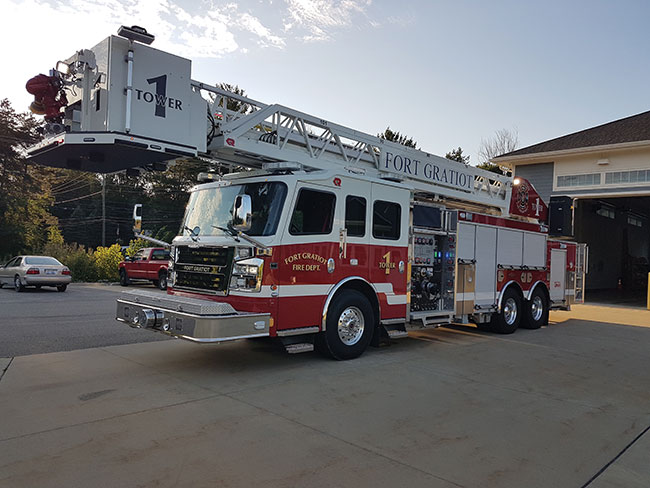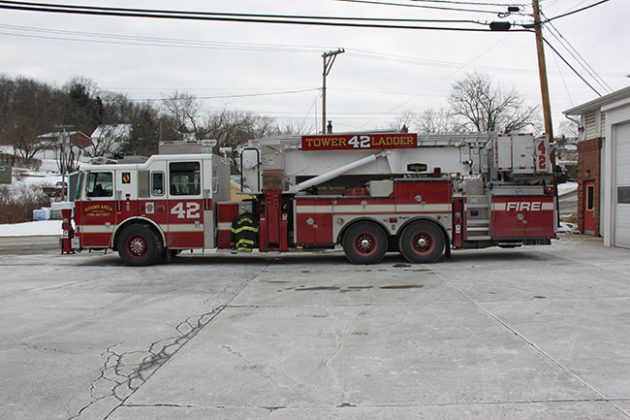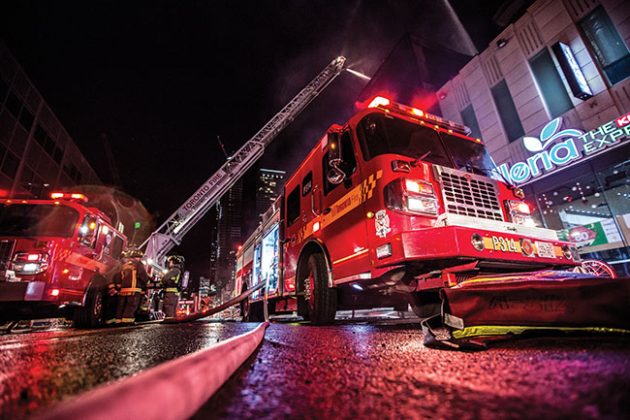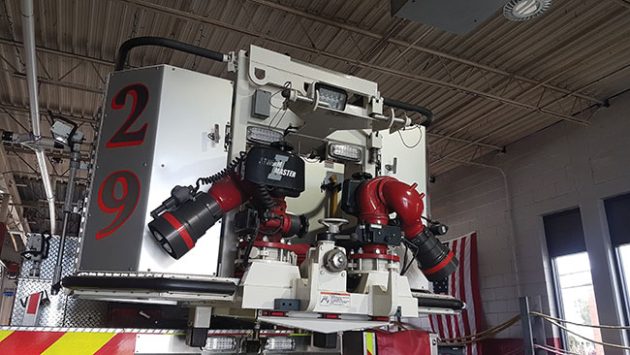
Features
Back to Basics: Which aerial to use?
June 9, 2022
By Mark van der Feyst
 Photo 1: A platform aerial with a rear-mount aerial device. Photo credit: Mark van der Feyst
Photo 1: A platform aerial with a rear-mount aerial device. Photo credit: Mark van der Feyst There are many different types of aerial trucks in the fire service. All of them have an intended purpose and are designed for certain operational benefits. Within the fire service, aerial trucks are usually the biggest truck in the fleet and are admired and loved by most firefighters. Not every fire department will have a need for an aerial truck in their fleet, but they certainly can benefit from the use of one and can use mutual aid for assistance.
What makes these types of aerial trucks different, and which one do you choose to use? Let’s explore the basics of the different types and what they are used for. An aerial truck is designed for some basic operations. Elevated access is one, for when you need to access an elevated place such as the roof of a building or remove people from a high location. Another basic operation is elevated water stream application. This is needed when water must be applied on top of a building or where application to the building/fire is best from above.
An aerial device can be mounted either as a rear-mount or mid-mount position. This refers to the location of the turntable on top of the truck chassis where the aerial device rotates and operates from. There are reasons to choose either type as it relates to or benefits operational capabilities. Photo 1 is an example of a rear-mount aerial device. Photo 2 is an example of a mid-mount aerial.

Photo 2: A mid-mount aerial.
There are advantages and disadvantages to each type of mount, operationally. Depending upon how the truck is positioned at the structure on location, access to the building can be limited to only two sides or one side. With a rear-mount aerial device, it can access two sides of the building better if the rear portion of the truck is located at the corner of the building. If the front cab of the rear-mount is facing the building, the amount of access to the two or one side of the building will be limited by the body of the truck. With a mid-mount aerial device, the cab of the truck will be the major obstruction preventing the aerial device from full access to the building.
Straight stick is a term given to an aerial device that is a straight ladder. As shown in Photo 3, a straight stick can be extended to give access up to 100 feet or more depending upon the manufacturer. At the end of a straight stick will be a single monitor. It will be fed by a water way that runs up the underside of the aerial ladder. The primary purpose of the straight stick is to deliver water and access to elevated positions. Rescues can be achieved using a straight stick but will be limited to a single person at a time. Multiple people can climb down the ladder if they are able to but if they need to be lowered to the ground, then single riders only. A straight stick will be a rear-mount aerial device.

Photo 3: A straight stick can be extended to give access up to 100 feet or more depending upon the manufacturer.
Platform is a type of aerial device that has a basket or working platform at the end of the ladder device, as seen in Photo 1. A platform aerial can be either rear-mount or mid-mount. With a rear-mount, the platform will hang over the front cab of the truck, as in Photo 1. This will cause an obstruction to sight when driving, as well as an obstruction in front to avoid hitting other stationary or moving items with. The platform can be used as a multi-purpose aerial to deliver water as well as perform rescues. A platform will accommodate one to two people, or sometimes three at the same time. A platform will allow a person to step onto the platform from a roof or from a building window.
In Photo 4, you will see two monitors on the end of the platform that can be used to deliver large volumes of water as needed. Sometimes the platform will only have one monitor. Regardless of the number of monitors, water supply will be the issue to keep them flowing as needed. When there is water flowing, the aerial’s capacity to flow water and also to rescue a person is greatly reduced. It is usually one or the other.

Photo 4: Two monitors on the end of the platform that can be used to deliver large volumes of water as needed. Sometimes the platform will only have one monitor.
Another operational advantage is for technical rope rescue. The platform can be used as an anchor point or as a redirect for a rope system for low or high angle rescues.
Articulating boom is a special type of aerial device that is used for different types of access. With this device, the aerial portion does not extend or retract, but rather articulates up or down with large aerial arms. Some versions will have an extending boom with an articulating arm at the end. On the end of the arm will be a platform bucket to deliver water or for rescue purposes. With this type of device, access to sub level areas can be achieved as well as narrow alleyways or limited aerial room; the boom arms can elevate straight up and then rotate as needed in a vertical position. Depending upon the manufacturer of the truck, an articulating boom can reach as high as 150 feet.
Departments that only need to have one aerial device will usually select a straight stick type for the ease of use and simplicity. Regardless of the type chosen or needed, be sure to know how each works and what advantages you can gain from them.
Mark van der Feyst has been in the fire service since 1999 and is currently a firefighter with the FGFD. Mark is an international instructor teaching in Canada, U.S. FDIC and India. He is the lead author of Fire Engineering’s Residential Fire Rescue & Tactical Firefighter books. Contact him at Mark@FireStarTraining.com
Print this page
Advertisement
- In conversation with John McKearney
- Stanley Mission begins evacuating those at risk from forest fire smoke